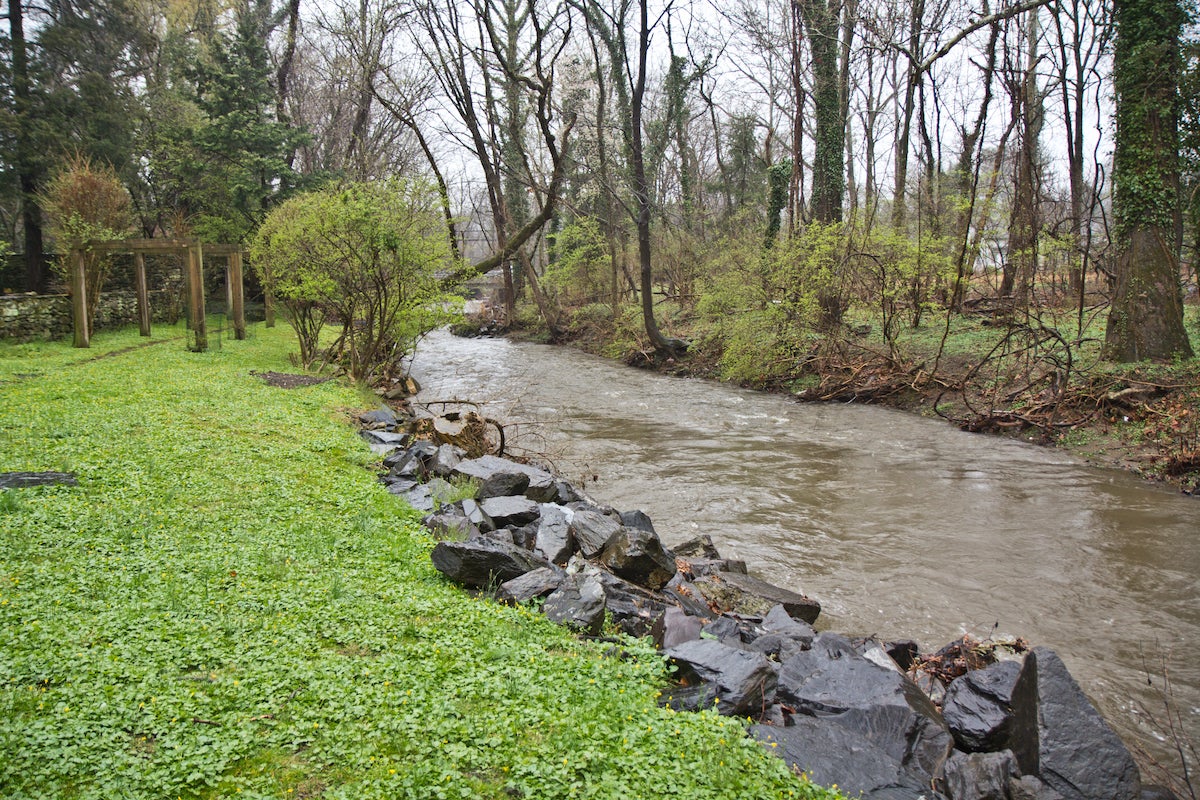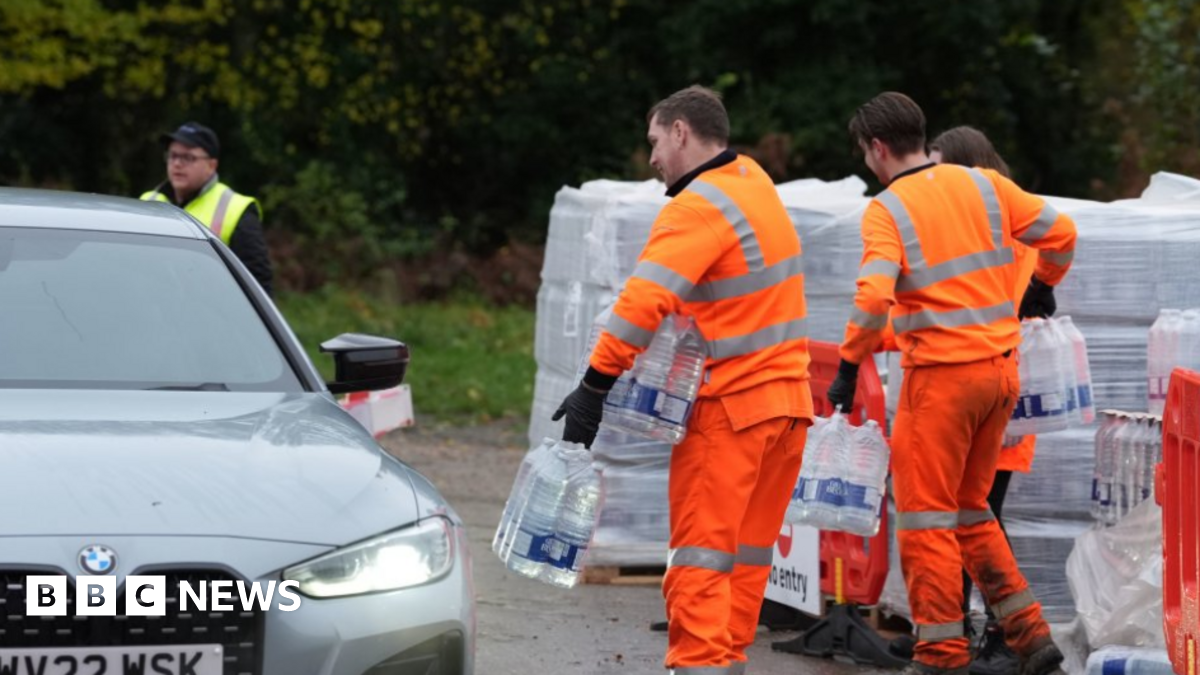EPA moves to limit scope of clean water law to reduce amount of wetlands it covers – WHYY

Report on the Redefinition of the U.S. Clean Water Act and its Implications for Sustainable Development Goals
Introduction to the Policy Revision
- The U.S. Environmental Protection Agency (EPA) has announced a redefinition of the “Waters of the United States” (WOTUS) rule, which determines the scope of the federal Clean Water Act.
- This revision significantly narrows federal jurisdiction to primarily cover permanent, standing, or continuously flowing bodies of water and their directly connected wetlands.
- The policy change is a direct implementation of the Supreme Court’s 2023 decision in Sackett v. EPA, which limited federal authority over certain wetlands.
Administrative Justification and Economic Objectives
- The stated purpose of the rule change is to accelerate economic prosperity and reduce regulatory burdens for landowners. This aligns with certain interpretations of SDG 8 (Decent Work and Economic Growth) by aiming to cut red tape for farmers, ranchers, and industry.
- EPA Administrator Lee Zeldin stated the new rule is intended to provide a “clear, simple, prescriptive rule” to end decades of regulatory uncertainty and what was described as federal overreach.
- The administration contends that the revision strikes a proper balance between federal and state authority, with states and tribes remaining responsible for regulating waters no longer under federal jurisdiction.
Direct Impacts on SDG 6: Clean Water and Sanitation
- The redefinition directly challenges the objectives of SDG 6 (Clean Water and Sanitation) by removing federal protections for a vast area of wetlands.
- Wetlands play a critical role in filtering pollutants, recharging groundwater, and maintaining the quality of drinking water sources.
- Critics, including the Natural Resources Defense Council, argue that by gutting these protections, the EPA is undermining its legal obligation to safeguard the nation’s drinking water.
Implications for Environmental and Climate-Related SDGs
- SDG 14 (Life Below Water) & SDG 15 (Life on Land): Environmental groups warn that the rule will encourage the destruction of thousands of miles of wetlands and streams. This loss of habitat poses a direct threat to aquatic and terrestrial wildlife, undermining biodiversity and the health of ecosystems central to these goals.
- SDG 13 (Climate Action): The policy is seen as detrimental to climate resilience. Wetlands serve as natural buffers against increasingly destructive storm surges and act as carbon sinks. Their destruction, as noted by the Center for Biological Diversity, removes natural protections against climate-driven events.
- SDG 11 (Sustainable Cities and Communities): By stripping protections for wetlands that provide natural flood control, the rule change potentially increases the vulnerability of communities to flooding. This conflicts with the goal of making cities and human settlements inclusive, safe, and resilient.
Stakeholder Perspectives and Governance (SDG 16)
- Government View: The EPA asserts it is adhering strictly to a Supreme Court directive, thereby strengthening institutional process and legal clarity under SDG 16 (Peace, Justice and Strong Institutions). The goal is to create a lasting and predictable regulatory framework.
- Environmental Groups’ View: These organizations frame the rule as a politically motivated decision that favors industrial polluters over public and environmental health, weakening the institutional integrity of the EPA and its enforcement of environmental law.
- Landowner View: The administration reports that the change responds to widespread concerns from farmers, ranchers, and other landowners about federal interference in land use, suggesting a move toward more localized governance.
Analysis of Sustainable Development Goals in the Article
1. Which SDGs are addressed or connected to the issues highlighted in the article?
- SDG 6: Clean Water and Sanitation: The article’s central theme is the redefinition of the “Waters of the United States” rule under the Clean Water Act, which directly impacts the protection of water resources, including wetlands, streams, and rivers, from pollution.
- SDG 11: Sustainable Cities and Communities: The article mentions that wetlands serve as a “safeguard against flooding.” By reducing protections for these natural areas, communities become more vulnerable to water-related disasters, which is a key concern of SDG 11.
- SDG 13: Climate Action: The article connects the destruction of wetlands to reduced protection from “increasingly destructive storm surges driven by the climate crisis.” It also references the administration’s effort to roll back “climate-friendly” regulations.
- SDG 14: Life Below Water: The rollback of the clean water rule threatens to “destroy thousands of miles of waterways.” Pollution and degradation of inland waters like streams and rivers ultimately affect downstream marine and coastal ecosystems.
- SDG 15: Life on Land: The new rule significantly limits federal protection for wetlands, which are critical freshwater ecosystems. The article states the rule change will “destroy thousands of miles of waterways critical to wildlife” and “wipe out life-sustaining waterways,” directly impacting terrestrial and inland water ecosystems.
- SDG 16: Peace, Justice, and Strong Institutions: The article discusses the role of government institutions (EPA), the legal system (Supreme Court’s Sackett v. EPA decision), and the process of regulation-making, including public comment periods. It highlights the conflict between federal and state authority and the influence of political ideology on environmental law.
2. What specific targets under those SDGs can be identified based on the article’s content?
- Target 6.6: By 2020, protect and restore water-related ecosystems, including mountains, forests, wetlands, rivers, aquifers and lakes. The article’s entire focus is on the scope of federal protection for wetlands and other water bodies, making this target central to the discussion. The new rule is described as a move that will “plow over more wetlands and streams.”
- Target 11.5: By 2030, significantly reduce the number of deaths and the number of people affected and substantially decrease the direct economic losses relative to global gross domestic product caused by disasters, including water-related disasters, with a focus on protecting the poor and people in vulnerable situations. The article explicitly notes that “stripping away protections for them [wetlands] puts millions of people in harm’s way” from flooding.
- Target 13.1: Strengthen resilience and adaptive capacity to climate-related hazards and natural disasters in all countries. The article highlights the role of wetlands in protecting communities from “increasingly destructive storm surges driven by the climate crisis,” linking their protection directly to climate resilience.
- Target 14.2: By 2020, sustainably manage and protect marine and coastal ecosystems to avoid significant adverse impacts, including by strengthening their resilience, and take action for their restoration in order to achieve healthy and productive oceans. The degradation of inland streams and wetlands, as discussed, leads to increased pollution and runoff that negatively impacts downstream coastal and marine environments.
- Target 15.1: By 2020, ensure the conservation, restoration and sustainable use of terrestrial and inland freshwater ecosystems and their services, in particular forests, wetlands, mountains and drylands, in line with obligations under international agreements. The article directly addresses the reduction of conservation measures for wetlands and streams.
- Target 16.6: Develop effective, accountable and transparent institutions at all levels. The article describes the EPA’s process of redefining a major environmental rule, citing a Supreme Court decision as its justification, which reflects on the functioning and accountability of these institutions.
3. Are there any indicators mentioned or implied in the article that can be used to measure progress towards the identified targets?
- Implied Indicator for Targets 6.6 and 15.1: The “scope of the nation’s bedrock clean water law” itself serves as an indicator. A reduction in the types of water bodies (e.g., wetlands not directly connected to permanent bodies of water) covered by federal protection indicates a negative trend for these targets. The article also mentions the potential destruction of “thousands of miles of waterways,” implying that the length or area of protected waterways is a measurable indicator.
- Implied Indicator for Target 11.5: The number of people or communities at increased risk of flooding due to the loss of wetland protections. The article states that “stripping away protections for them puts millions of people in harm’s way,” suggesting that population vulnerability could be a metric.
- Indicator for Target 16.6: The article mentions the rule “faces at least 45 days of public comment.” The existence and duration of a public comment period is a direct indicator of participatory and transparent decision-making within an institution like the EPA.
4. Table of SDGs, Targets, and Indicators
| SDGs | Targets | Indicators (Identified or Implied in the Article) |
|---|---|---|
| SDG 6: Clean Water and Sanitation | 6.6: Protect and restore water-related ecosystems, including wetlands. | The scope of water bodies (area/type) covered by the Clean Water Act; The length (miles) of waterways protected. |
| SDG 11: Sustainable Cities and Communities | 11.5: Reduce the number of people affected by water-related disasters. | The number of people and communities put at increased risk of flooding due to the loss of wetland protections. |
| SDG 13: Climate Action | 13.1: Strengthen resilience and adaptive capacity to climate-related hazards. | The extent of natural areas (wetlands) that protect against storm surges. |
| SDG 14: Life Below Water | 14.2: Sustainably manage and protect marine and coastal ecosystems. | The level of pollution in inland waterways that affects downstream marine ecosystems. |
| SDG 15: Life on Land | 15.1: Ensure the conservation and sustainable use of inland freshwater ecosystems like wetlands. | The area of wetlands and streams removed from federal jurisdiction and protection. |
| SDG 16: Peace, Justice, and Strong Institutions | 16.6: Develop effective, accountable and transparent institutions. | The provision of a public comment period (e.g., “45 days”) for new regulations. |
Source: whyy.org
What is Your Reaction?
 Like
0
Like
0
 Dislike
0
Dislike
0
 Love
0
Love
0
 Funny
0
Funny
0
 Angry
0
Angry
0
 Sad
0
Sad
0
 Wow
0
Wow
0
















































:focal(1500,1000)/https://media.globalcitizen.org/a6/9a/a69a4720-d8a1-4715-b596-18738d03c05c/rotary_polio_hero_image.jpg?#)







/countries/sri-lanka/photo-credit---dmc-sri-lanka.tmb-1200v.jpg?sfvrsn=dc298bcc_1#)

















